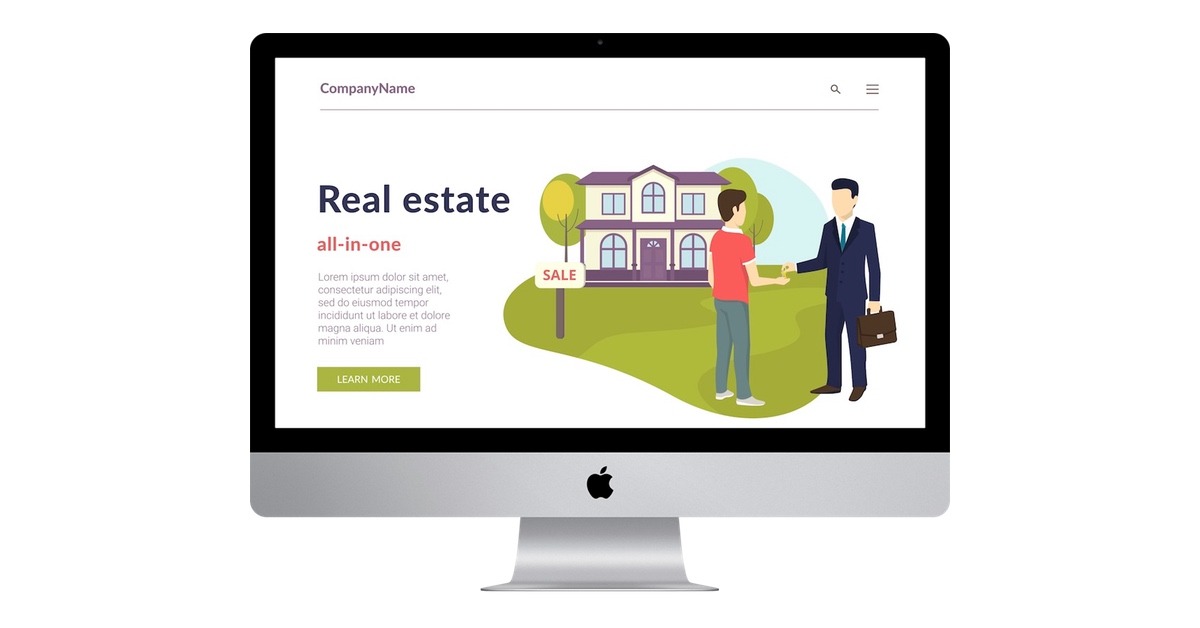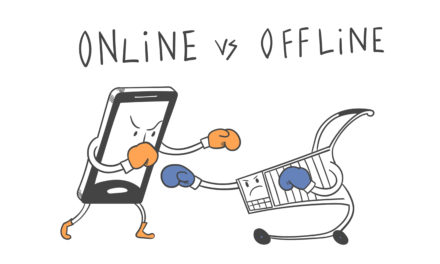Why do real estate agents invest so much time and effort into online marketing? Simple. To grab the attention of new prospects and direct them to their website. The only problem is, most traffic that comes from social media and advertising tends to bounce when it lands on a real estate website. Creating a high-converting real estate landing page is both the goal and the problem that you need to solve.
Why do most real estate prospects leave your website?
When you create an advertisement, let’s say on Google Adwords, your goal is to make the prospects curious enough to click on your content. This can be done with a clever line of text or an intriguing picture. At the end of the day, a potential client will click on your ad because they believe it will bring them value. They have a need and you are offering some sort of solution.
The problem with real estate home pages
If someone takes the time to click on your advertisement, why wouldn’t they investigate your website once landing there?
In most cases, the prospect likely experiences some level of disconnect. Let’s say your advertisement was tailored towards confused first-time homebuyers. An ad like this might have a high conversion rate because the process of purchasing a home for the first time is daunting and confusing. First-time homebuyers are actively seeking out answers to their specific questions.
The disconnect occurs when they land on your homepage or services page which doesn’t provide the exact answers they were searching for. Most real estate agents set up their web pages to be fairly generic, proving a broad overview of all their services.
While this might be a good place to start for your average client, when a prospect is looking for an exact solution, your homepage could have them looking elsewhere.
How real estate agents funnel traffic

There are a few common ways that you can attract attention to your real estate website.
- Social Media
- Organic Search (SEO)
- External Linking
- Paid Advertising
Agents use social media to build an online following. If you are looking to bring traffic from your Twitter feed to your site, you might share a timely insight followed by a call to action (CTA). This CTA would outline how you could help the prospect and link back to your site.
Organic search brings users to your website after they have used a search engine to attempt to answer a question. If you have created content with SEO in mind, hopefully, Google directs the prospect your way.
External linking directs traffic back to your site by mentioning your brand or services on an external source such as someone else’s blog.
And paid advertising is the process of creating marketing materials on platforms such as Facebook and Google that will hopefully catch the attention of browsers and funnel them back to your site.
Real Estate Landing Pages – A Specific Solution
All four of these options have the ability to attract the attention of a potential prospect with a specific message. However, if you don’t have a specific solution for the prospect to explore and interact with, you will likely lose their interest quickly.
The solution: a real estate landing page.
What Is A Landing Page?
A landing page is a single web page that is designed for a specific topic or purpose. Using our previous example, you could create a first-time home buyers landing page where all the corresponding traffic could be funneled. This way, when the visitor lands on your landing page, they will be interacting with the content that can directly answer their questions.
All real estate landing pages should be created with one goal in mind: Conversion. All of the pictures and text found on your landing page are there to help lead the prospect to your call to action.
The Fundamental Elements Of A Real Estate Landing Page

Ready to harness the power of landing pages? Here are the 8 qualities of a landing page that successfully converts online real estate leads…
#1) Embrace Minimalism
Have you ever landed on a webpage and instantly felt overwhelmed? Avoid giant walls of text above the fold on your web pages. A simple, clean, and minimalistic design will allow a prospect to easily see that the content pertains to their particular need.
This style of landing page also leaves the prospect hungry for more information which will prompt them to begin scrolling down the page (towards your CTA).
#2) Announce Your Offer/Value Proposition Right Away
When a prospect lands on your page, they should be able to decipher your proposed offering within seconds. It should be extremely clear and exciting. Long lead-ins typically don’t perform well on real estate landing pages. Additionally, ensure your main title and headers contain the keywords that relate to your landing page topic.
#3) Utilize Endorsements and Trust Signals
Every great landing page includes some sort of endorsement where a previous client explains the value that you brought them. This gives the prospect a glimpse into your abilities and also begins to create trust between the prospect and your brand.
Real estate agents can also use “trust signals”. These are images or logos that increase your credibility. Have you been nominated for the Top 40 Under 40 in your city? Perhaps you are accredited by the Better Business Bureau. Utilize the brand imaging from these recognitions to further build trust.
#4) Match The Advertising Style
When you are creating your landing page, use your advertisements as inspiration. The styles of your landing pages and your marketing materials should be very similar. Use the same type of language and phrases. You will also want to make sure that the color schemes are the same. Remember, a landing page is an extension of the ad that they first clicked on.
#5 + 6) A/B Testing
Your first landing page design may not be the most effective. The only way to find out is through some basic A/B testing. Create two or three landing pages and funnel similar traffic to all of them. After a set amount of time, perhaps a two-week period, you can analyze the metrics and see which page converted at the highest rate.
#7) Create a Sense of Urgency
The best landing pages create a sense of urgency. Your ad copy should slowly build in momentum and push towards your end goal or CTA. Perhaps you are running a free course for first-time homebuyers in your city. Your landing page should touch upon the fact that there are limited spaces available and that the date is fast approaching.
TIP: Countdown clocks can instantly convey a sense of urgency on any style of landing page.
#8) Provide Alternative CTAs
Always provide prospects with multiple opportunities to interact with you. Maybe the user isn’t ready to contact you for home buying services today but they found your information very useful. This is where a secondary CTA can capture any of the leads that were not convinced by your main CTA.
One of the most common and successful secondary CTAs is an email capture. If you have a monthly email or you have authored an ebook, provide an email sign-up at the very bottom of the page. Remember, if someone took the time to read through all of your copy and scroll to the bottom, they are very close to converting, you just have to give them the right outlet.
Conclusion
These 8 elements have the ability to increase your conversion rates 10x if implemented properly. Constructing the perfect landing page is not a simple task but it will be well worth your time.





